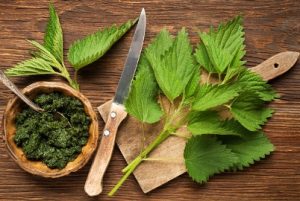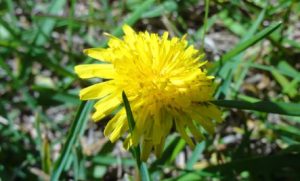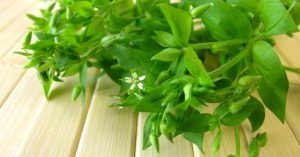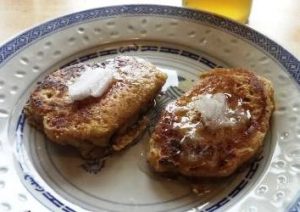Are you like me and like cooking wild plants? When the weather gets warm I get excited about picking wild greens (also known as Weeds) and wild berries as saskatoons are my favorite berry.
All of my life I have eaten wild plants. My father would bring in dandelion greens and boil them up for us. (sometimes it was out of necessity as there simply was no food in the cupboards).
Benefits of Eating and Cooking Wild Plants
• Full of more nutrition than the same plant grown domesticated.
• Are fresher than store bought as vegetables and fruits are shipped long distances to market, sit on shelves, losing flavour and nutrition.
• They are organic as no fertilizers, pesticides, and herbicides are used in the wild. (if there is don’t pick them there, I won’t pick them in the parks in my city as I know they spray for mosquitoes).
• Not grown in depleted soil as nature replenishes itself.
Best of all they are free!
And they are gourmet foods. A few of my favourites are nettles, dandelions, chickweed, fiddleheads & lambs quarters.

Nettles
Now you might wonder how to pick these since they are called stinging nettles and they do sting. They are a great spring tonic. Every year in spring, I would make nettle soup when I lived in England. I will post that recipe later. You can even put them in your smoothies.
Nettles leaves contain flavonoids, acetylcholine; lecithin; carotenoids, vitamin C, and many minerals.
Dandelion Flowers are so good for us. Celebrate your Dandelions this year! Eat them.
Dandelions benefits cannot be dismissed as they have been used as food and for medicine for thousands of years. Every part of this plant is extremely good for you! There are many dandelions health benefits for us.
Dandelion Greens
They are one of the most useful of food herbs. More importantly, they are there for the picking. I dig them up with the roots intact and keep the roots in water in a bowl till I am ready to eat them thus keeping them as live food. I usually simply steam them along with my other vegetables. The most common thing to do is boil dandelion greens until tender (changing the water once will take away some of the bitter taste if they are not young greens), then garnish with olive oil, butter or lemon juice.
The leaves are very high in potassium, Vitamin A, B, C and D, the Vitamin A content is higher than that of carrots. They also have iron, fiber, protein and a little carbohydrate.
Chickweed, a Tasty, Healthy Weed for Eating

Chickweed is a tasty nutritious weed. Many of the weeds in our garden are food that I include them in my meals and let some of them grow as real food in my garden. ‘Little star in the mist’ is the translation of this weed’s scientific name, Stellaria Media, though “chickweed” is the most common name.
Grows almost everywhere! It is very easy to pull up as it grows in clumps of bright green with tiny white flowers. I simply add them to my salads and occasionally to soups, steamed vegetables and stews.
Chickweed contains Beta-carotene, B vitamins, Vitamin C, Bio-flavonoids, GLA/Gamma-linoleic Acid and lots of Minerals.
Fiddleheads
The fiddlehead, is a delicacy that appears in the early spring in April and May in places like the coasts of Canada and the US and all over England. We do not see them much here in Edmonton. Simply eat them the way you would asparagus in salads, steamed or in soups.
Fiddleheads contain protein, Vitamin A, Vitamin C and minerals including iron.
Lamb’s Quarters also known as pigweed. Good Weed…Bad Weed
Randy has had an on /off relationship with weeds recently and now he’s at it again. This time his attention has now gone to yet another weed called Lamb’s Quarters. This one’s not so pesky to your lawn and it tastes much better. Actually, it tastes almost exactly like spinach – particularly when cooked – and again, it has all kinds of nutritional value and… it’s free.
They are very profuse in all gardens. The young leaves are great in salads as they taste like spinach. When they are more mature, the leaves are better steamed, in soups or in smoothies.
Lamb’s quarters have a number of Vitamin B’s, Protein, Vitamin A, Vitamin C, and minerals including iron.
Thistles
The Man Who Tried to Eat Canada Thistle – Randy has had various experiences with the wild plants in his yard and garden. Some of them are pleasant experiences, and some of them are not. This story falls into the second category, find out more about it.
Cooking Wild Plants Recipes 
Dandelion Flower Pancakes Saskatoon Crumble made with my favorite wild berry from northern Canada; Saskatoons.
Dandelion Smoothie: After almost passing out from a dandelion smoothie, Randy gives some practical tips to keep your dandelion smoothie palatable. Make a healthy but still drinkable smoothie.
Roasted dandelion roots make for a tasty vegan beverage in the form of Dandelion Root Coffee. It provides that coffee flavor but with all of the health benefits from this nutritious root.
Tasty Vegan Chickweed Pesto – This chickweed pesto is vegan, is easy to make and tastes great! One of the best things about it is that it is made from a weed that grows everywhere. It is a delicate green weed which is so good for pesto. Toss this pesto with pasta or serve it with bread or crackers for an appetizer.

Dandelion Flower Pancakes: No milk or eggs, but lots of health and good taste. This recipe really is my version of pancakes. I developed it when I was unable to eat eggs or milk at all due to food sensitivities. Interestingly whenever I make these pancakes no one seems to notice the lack of these two ingredients.
Dandelion Flower Syrup: You can taste the unique sweetness from the yellow petals in this syrup. This is a great treat from your weeds and it is so easy to make. It is best to pick your dandelions before mowing the lawn or digging them up for dandelion coffee. Or even better, go out into the country and pick them in the wild away from the city’s pollution or away from sprayed lawns. My hands get all yellow from picking so many of these.
Dandelion Flower Cordial: The word cordial sounds tasty, and it’s very appropriate in this case! This is a simple and healthy beverage to make with all of your dandelions.
Please share your cooking with wild plants recipes with us; I look forward to trying them.


Hi Randy, It would be nice to find the purpose of Canadian Thistle. The one comment said they juiced it,have you done that. Since you seem pretty brave maybe you could let us know. 🙂 Love this site
thanks
Hi Connie. Yes I did try that. You can find my experience on The Man Who Tried to Eat Thistle; at https://www.realfoodforlife.com/eat-canada-thistle/
The short answer is I tried it too concentrated and it was too strong for me.
I am areal advocate of eating wild food and am glad to have found your site/article. Keep up the good work!
Peace, Alan
http://www.thedandelionappreciationsociety.org